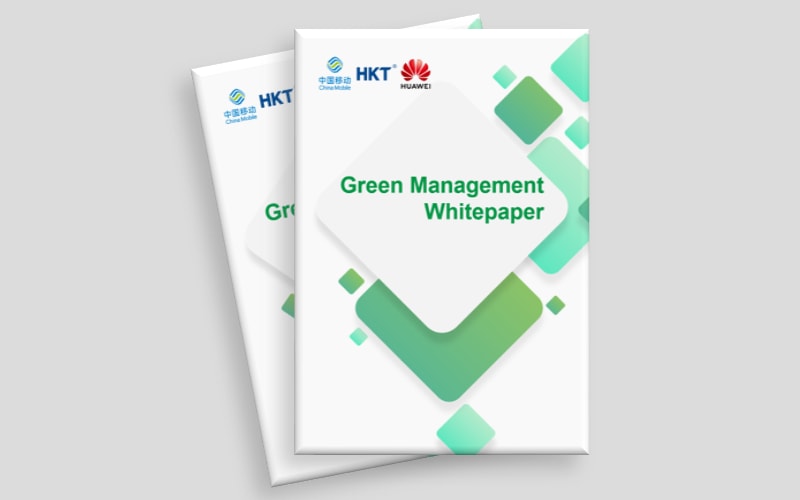Industry Trends
Roland Berger: Challenges & Solutions for Carbon Neutrality
Roland Berger MD Denix Depoux explains why digitalization is critical to climate action and climate performance in the telecom space.


By Denis Depoux, Managing Director, Roland Berger

Digitalization is critical to both climate action and climate performance
We all know that our planet is burning and that climate change is the most urgent, global issue we face today, one that will impact generations to come.
Germany, where Roland Berger is from, experienced its worst floods in 2021, with many experts pinpointing climate change in the North Atlantic as the source of these catastrophic events. Almost at the same time, China experienced torrential rains, causing the loss of life and economic havoc. It’s time for action.
At the current pace of emissions, our "credit limit” of confining global warming to 1.5 degrees will take between four and eight years. For 2 degrees, it could take 20 to 25 years – if it’s possible at all. Either way, the clock is ticking.
A total of 137 countries have made a pledge to achieving carbon neutrality, 90% of which have set 2045 and 2050 as targets. That may appear distant, but the lead time for transforming industry and society involves long investment cycles, particularly in the energy and mobile infrastructure sectors, which are counted in decades.
Carbon neutrality commitments put pressure on developing solutions that are up to the challenge, but it’s also a matter of competitiveness. Consumers want to buy products with low- or zero-carbon content. So, while thinking of ways to penalize and tax high carbon content in their system, legislators across the planet are also looking at ways of taxing imports that have a high-carbon cost.
I’m a proud European because after pioneering the fight against climate change more than 20 years ago, the European Union is still at the forefront of change with the recently announced Fit-for-55 legislation package.
After the Kyoto Protocol was established in 1992, European commitments towards mostly renewable energy stemmed from Germany, with the economic and technological motivations for energy reduction already clear. The idea was to create a new market and a technological advantage for Europe within the European single market. It worked: The emissions reduction roadmap saw renewable energy production rise by 2.5 times in 10 years. However, the competitive advantage of Europe is less than certain.
China benefited greatly when it joined the WTO, becoming the producer of the majority of renewable energy equipment. It now makes 70% of the world’s solar PV modules and occupies a 60% share in the wind turbine market. And a lesson has been learned for the future: Climate change can stimulate progress in technology, while providing a competitive advantage to the leaders in the field.
Europe also learned that it needs to protect itself from carbon leakage, or the ability to outsource emissions globally. This resulted in the EU Green Deal and the Fit for 55 program under the Carbon Border Adjustment Mechanism, which sets targets as early as 2025 for some heavy industries. While bringing about a competitive advantage through technology, Europe also plans to use this time to create an estimated 2 million new jobs. Shifting to lighter carbon operations and business models will be a key driver for regional and global competition between countries, regions, and companies.
China in focus
China has a huge challenge because of the mountain of coal it starts with and because its energy consumption will continue to grow, even though the energy intensity of its economic growth has decreased by one third in the last 10 years.
However, China has a set of unique advantages, including:
- A long term perspective combined with planning and execution discipline.
- Supply chains that are gradually becoming integrated beyond China at a regional level in South East Asia, a movement that the RCEP treaty will accelerate.
- The physical space and renewable energy resources to stimulate development.
- Many potential carbon sinks such as reforestation or the restoration of wetlands.
- Strong digitalization both on the consumer and supply sides.
How will China achieve carbon neutrality?
Greenhouse gas emissions are generated by every human socioeconomic activity, mostly through the combustion of fossil fuels, chemical process, and the leakage of some gases.
- Power generation, mostly by coal-fired power stations, contributes half of China's CO2 emissions.
- Industrial production is responsible for one third.
- Transportation by road, rail, water and air, and domestic and international travel accounts for 10%.
- Up to 6% is caused by construction, construction materials, and energy efficiency in buildings.
- Waste disposal and treatment, including agriculture, generates the remainder.
Energy, mobility, and buildings are central to reducing greenhouse gas emissions and reaching carbon neutrality.
So, how can digitalization contribute?
The major factor towards carbon neutrality is reducing emissions upfront. First of all, what isn’t measured cannot be managed, let alone reduced. In most cases, emissions are not actually monitored, but are calculated based on data-fed algorithms that model CO2 emissions from all types of activities. For urban activities like traffic or utilities, the data is generated from local governments’ existing information systems. For industrial activities, it comes from the instrumentation and control systems of production machinery. In both cases, this data can be real-time or generated from frequent monitoring.
One district of Mannheim in Germany deployed a smart power grid system based on the data collected from smart meters, which achieved a direct reduction in carbon. A cohort of 200 residents in one phase of the project saw a reduction of daily energy consumption by 6% to 8%, with an equivalent reduction in CO2 emissions.
Abundant data can also be used to virtualize city planning and operations by, for example, enabling simulations that can improve city design, planning, and optimization, and by building in a low-carbon approach from the start. Urban environments are the single biggest contributor to climate change, producing two thirds of emissions.
The software company Dassault Systèmes provides multiple virtualization solutions that enable low-carbon urban planning and, in turn, new urban designs supported by environmentally optimized decisions. For example, reducing commuting time through industrial, commercial, and residential zones can optimize mobility and cut carbon footprints.
Stockholm, which plans to become carbon neutral by 2040, has implemented best practice in the field of intelligent transportation planning. The local government has reconstructed traffic routes to encourage low-carbon commuting by simulating layout, road networks, and carbon emissions. As a result, 93% of the city's residents use public transport or low-carbon ways to travel.
Energy efficiency in buildings can be increased by the continuous monitoring of key performance indicators around occupancy, heat, cold, and lighting. Doing so can achieve outcomes like minimizing heat or cold leaks and maximizing the usage of facilities. Optimized industrial processes can result in low-carbon building materials such as cement, concrete, glass, and steel.
Energy efficiency in production processes can be increased by more efficient industrial processes, for example, stopping the combustion of fossil fuel through the electrification of furnaces and tighter control of process temperature and pressure.
This is where digitalization plays a key role in saving energy by enabling instrumentation and control, real-time monitoring, and process regulation with algorithms.
Data and digitalization are key enablers of climate action and climate performance. Several key technologies can help with the modeling, visualization, monitoring, planning, and optimization processes:
- IoT and the industrial Internet can generate and collect the basic data needed through things like smart and automated meters, intelligent sensors, and smart wearables.
- 5G and cloud can meet requirements for massive, frequent, and low latency communication.
- Machine learning can process the mass of new data, enabling the understanding of greenhouse gas emissions and ways to improve it.
Corporations, as well as governments, are tackling the climate challenge out of responsibility and compliance and also to increase competitiveness. And digital technologies are the key to achieving both.
- Tags:
- Environment






